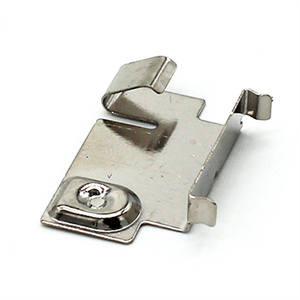Heat Treatment Of Battery Contact Plates
Battery contact plates play a crucial role in the battery system, responsible for the current transfer between the internal and external circuits of the battery. To ensure excellent conductivity, corrosion resistance, mechanical strength, and long-term stability of Battery Contact Plates, heat treatment is usually required.
The main purposes of heat treatment for Battery Contact Plates are as follows:
Improving conductivity: Through heat treatment, the microstructure of Battery Contact Plates material can be changed, reducing the internal resistance of the material, thereby improving its conductivity
High conductivity. This is crucial for ensuring efficient and safe current transmission in batteries.
Enhanced corrosion resistance: Batteries may encounter various corrosive environments during operation, such as acidic or alkaline electrolytes. By heat treatment, a protective film can be formed on the surface of Battery Contact Plates, improving their corrosion resistance and extending the battery’s service life.
Improving mechanical properties: Heat treatment can alter the mechanical properties such as hardness, strength, and toughness of Battery Contact Plates, making them more adaptable to various working environments and application requirements. For example, through heat treatment processes such as quenching and tempering, Battery Contact Plates with excellent mechanical properties can be obtained.
Eliminating residual stress: During the manufacturing process of Battery Contact Plates, residual stress may be generated, affecting their performance and stability. By heat treatment, these residual stresses can be eliminated, improving the stability and reliability of Battery Contact Plates.
The specific process of heat treatment for Battery Contact Plates depends on the type of material and the required performance. Common heat treatment processes include:
Annealing: Heat the Battery Contact Plates to a certain temperature, then slowly cool them to eliminate residual stress inside the material and improve its processing performance.
Normalization: After heating the Battery Contact Plates to an appropriate temperature, they are naturally cooled in air to improve their mechanical properties and corrosion resistance.
Quenching: Heat the Battery Contact Plates above the critical temperature and then rapidly cool to obtain materials with high hardness and strength. Tempering treatment is usually required after quenching to eliminate residual stress and improve toughness.
Aging treatment: Holding at a specific temperature for a long time to cause changes in the internal structure of the Battery Contact Plates, in order to improve their performance.
During the heat treatment process, it is necessary to strictly control parameters such as heating temperature, holding time, and cooling rate to ensure that the Battery Contact Plates achieve the required performance. In addition, strict inspection and testing are required on the battery contact plates after heat treatment to ensure that their quality and performance meet the requirements.
